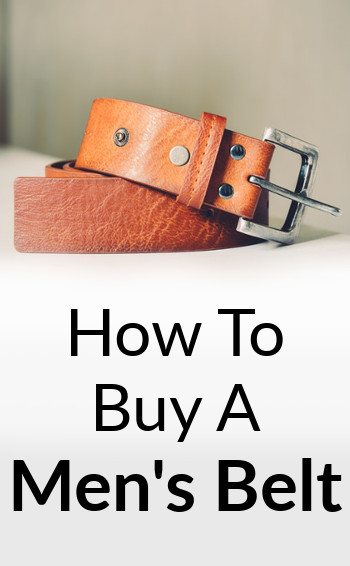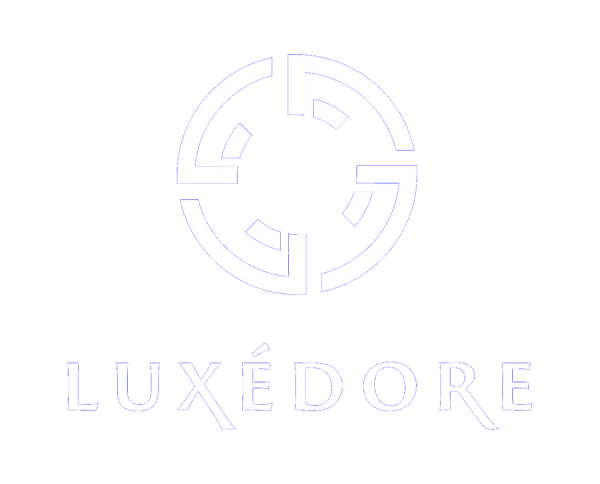
How to Purchase The Perfect Belt
Share
Wearing a belt well is one of those litmus tests of fashion:
The simple task, done right, confirms you as a man who knows his clothes.
A mismatch or other error shows that you still need to learn more about dressing well.
Fortunately, the basics of good belts aren’t hard to learn, and most are common sense.
The rest is personal taste — and belts allow plenty of room to express it.

Men’s Belt Basics: Belt Length
Dress Belts should have a few inches of leather to the left of the buckle once it’s fastened. Enough to tuck under your first belt loop, or the loop on the belt if it has one, is a good rule of thumb.
Err on the side of shortness if you need to, rather than wrapping a long tail of leather around your hip a second time.
Casual belts have a little more room for flexibility, but an overly long tail end is always an awkward look.
Store-bought dress belts are usually measured with a range of pant sizes. Pick your belts two or three sizes larger than your pants to get a good fit.
If you wear a 34″ trouser waist, a belt labeled 36″-38″ will probably be in the right neighborhood. Of course, the easiest check is just to try the belt on in the store, at least wrapping it around your waist over your pants. Just remember that it’ll sit a bit tighter when it’s worn properly.
Certain types of casual cloth bands have square brass buckles and a brass cap on the other end to feed through the mechanism. Military surplus stores often have these, and other manufacturers have imitated the style as well.
These are traditionally worn “brass on brass,” with no spare belt beyond the buckle once fastened. Since the belt is cloth, you can remove the buckle and trim the cloth down until it’s the right length, then clip the buckle back into place!

Men’s Belt Basics: Belt Buckles
The bigger your belt buckle the less formal it is. Dress belts typically have very small, flat belt buckles (and tend to be narrower belts themselves). Larger buckles with rounded shapes are common on more casual styles. Almost all dress belts will have either a gold-colored or silver-colored finish.
If you wear male jewelry of any kind — cufflinks, tie tacs, and so forth — the belt should be in the same color family. Silver accents should go with a silver belt buckle and gold with gold. A wedding ring is always an exception — there’s no need to restrict yourself to gold accents for your entire married life. The ring is understood to be a gesture independent of your personal style.
Your casual belts can have almost any kind of buckle you like. Consistency of theme is more important than the shape or size in casual settings. If you like large metal buckles with Western motifs, wear them with a Western-styled outfit rather than a tight urban look. There’s only so much mixing and matching you can get away with.
Men’s Belt Basics: Belt Colors
Leather should always match leather. That rule stays with you in dress and casual wear: brown leather shoes go with a brown leather belt, and black with black. Glossy belts should be paired with highly-polished shoes; matte shoes go with matte belts. If you’re wearing casual shoes that aren’t made of leather, you have more freedom to work with. Cloth shoes can be paired with cloth belts of a different color.
Rare animal patterns can be very expensive, but should still be considered casual wear. A very high-quality ostrich-skin belt is too ostentatious for a business setting (but can be very sharp-looking out on the town).
Snakeskin and other reptilian patterns are eye-catching options as well — just keep in mind how much attention you want being drawn to your midsection. That’s where people’s eyes will be going if the belt is the most distinctive part of the outfit. The same holds true for brightly-colored belts of more conventional materials.
Men’s Belt Basics: Styles of Buckle
There are a few common ways of approaching the basic task of holding your pants up. Most belts fall into one of these styles:
- Buckles with a tongue: the belt slides through a loop of metal, and a metal tongue is slipped through a hole in the belt to pin it down.
- Buckles with a hook: a flat metal (or plastic) plate is attached by slipping a hook on the back of the buckle through the front of the belt.
- Buckles with a sliding latch: the belt slides through a metal latch, inside which a vertical peg presses the belt into place.
- Braided belts: use a basic tongue buckle, but the belt is made of a woven leather braid rather than a flat piece of leather with punched holes. The tongue can slip between any two strands.

Men’s Belt Basics: Buying A Belt
Very similar-looking belts sometimes vary widely in cost. The quality of the leather is one common factor: calfskin is the most common material used for belts, and a good belt will have a soft, supple leather. Flex the belt to make sure it hasn’t turned brittle or started to crack. Another good test of leather is to score the back very lightly with your fingernail — if a faint line appears, the leather is still soft and fresh. Old, hard leather will resist your nail.
Construction is the other major factor affecting the price of a belt. Look for small, tight stitching with no loose ends wherever the leather has been sewn. Buckles attached with a snap on the back of the belt can be changed out, while a buckle stitched in place is the only one you can wear with the belt — some men may find the flexibility of a snapped belt worth paying more for, especially in good leather. Belts can be custom-cut at some leather goods stores.
Brand name will also play a factor, but means quite a bit less than the other factors. Your belt is too small for most people to be able to tell at a glance whether it’s designer or not. Spend the money on quality instead.
Men’s Belt Basics: Belts & Jean Labels
Speaking of designer goods, some high-end jeans have a famous label right between two of the belt loops. You may be tempted to leave the belt off, so that the label can be displayed more prominently.
It’s not a great idea in general. Un-belted jeans, even expensive ones, make you look like a slob. Choose a slim belt that lets part of the label show and leave it to other people to notice your fantastic style — or not. If they weren’t in the know you weren’t going to impress them anyway, right?

